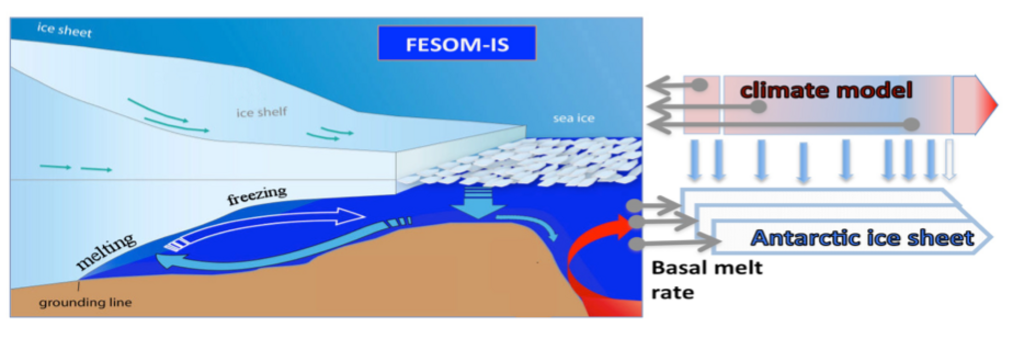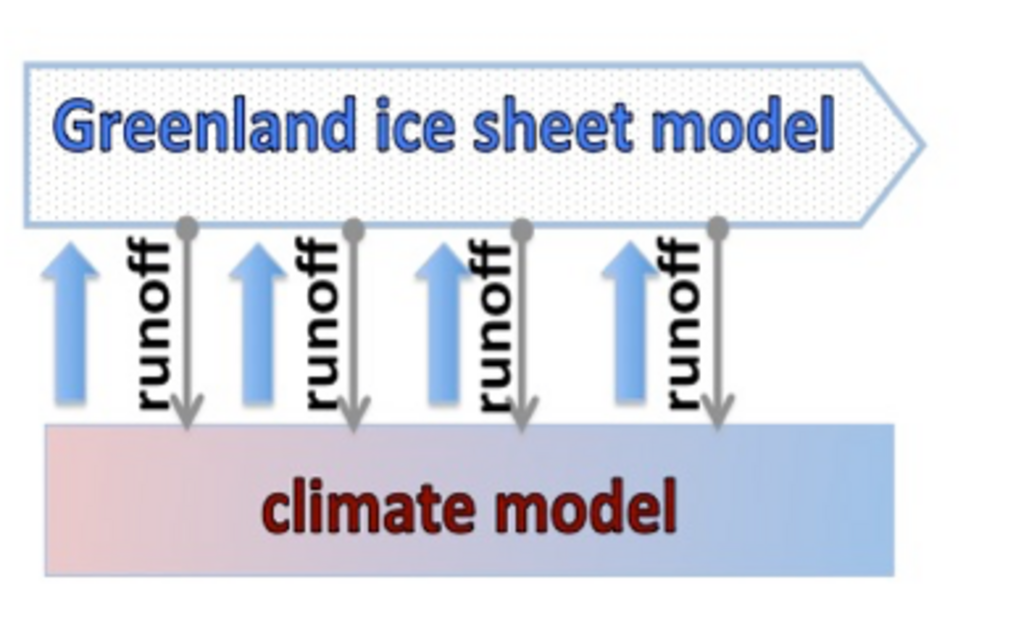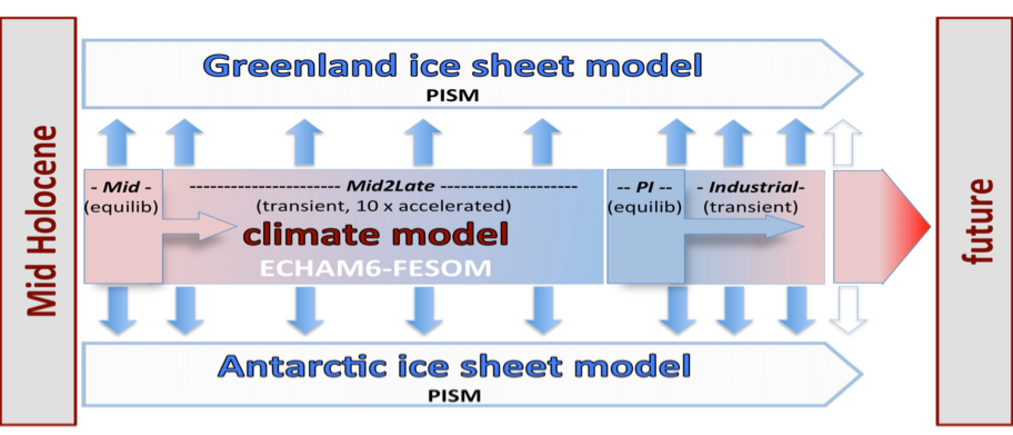SLOSH
Global sea level change since the Mid Holocene: Background trends and climate-ice sheet feedbacks (SLOSH)
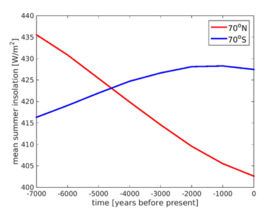
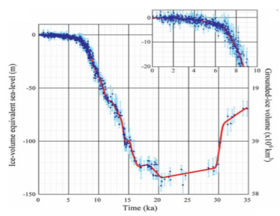
(Within WP A, topic II: Historic sea level estimates (paleo time scale))
Abstract
Over the last few decades the contribution of the ice sheets of Greenland and Antarctica to sea level rise has grown. It is however not clear to what extent the recent reduction in land ice mass is related to the globally warming climate. We aim to assess natural variability and long-term trends in the ice sheets' mass balance in relation to changes during the industrial period. For this purpose we turn our attention to the last 6000 years, from Mid Holocene to present, as this period is characterized by similar to present ice sheet geometries as well as moderate and gradual climate change before the onset of rising greenhouse gas concentration.
The base of this project focuses on ice sheet variations of Greenland and Antarctica over the last 6000 years, combining ice sheet simulations and climate simulations operating on different spatial and temporal scales. Additionally we will focus on those interactions between the climate system and the ice sheets, which are usually unresolved in millennial scale simulations.
In particular, we will analyze:
- the response of the two ice sheets to climate variations over the last 6000 years
- the small scale ocean-ice shelf interaction and their impact on the basal melt rates in ice shelf cavities around Antarctica
- the ice sheet-climate feedbacks associated with Greenland melt water runoff
- the impact of different basal melt scenarios on the mass balance of Antarctica
- the skill of potential parameterizations of basal melting, which are feasible for Earth system modeling on long time scales
The project is generally divided into two parts. The “background experiments” consider how Holocene climate change induces long-term sea level change (Fig. 3). Then “feedback experiments” (Fig. 3) focus on the influence of two important ice sheet – climate feedbacks:
- Melt water runoff from Greenland’s ice sheet may affect the meridional heat and moisture transports in the climate system that will eventually affect the ice sheet’s surface mass balance.
- Small-scale ocean ice-sheet interaction within Antarctic ice-shelf cavities determine basal melt rates and may affect the internal dynamics of the ice sheet (Fig 4, lower panel).
References:
Berger A. and Loutre M.F., 1991, Insolation values for the climate of the last 10 million of years. Quaternary Sciences Review, Vol. 10 No. 4 pp. 297-317, 1991.
Lambeck, K., Rouby, H., Purcell, A., Sun, Y. and Sambridge, M. 2014. Sea level and global ice volumes from the Last Glacial Maximum to the Holocene. Proceedings of the National Academy of Sciences of the United States of America 111(43): 15296–15303.6989–7002.,doi: dx.doi.org/10.1175/JCLI-D-11-00667.1
